Adding drop shadows to already cut-out objects can greatly enhance the depth and realism of your images. In this guide, you will learn how to effectively create a drop shadow in GIMP to give your design that special touch. Using a mini golf ball and a mini golf course, we will show you two different techniques to generate and customize drop shadows to your liking.
Main Findings
- Create realistic drop shadows using GIMP filters.
- Understand the importance of shadow offset and blurring.
- Experiment with different shadow layers for a dynamic effect.
Step-by-step Guide
To create a drop shadow, first open your image, in this case, the mini golf course. In the layers palette, you will see the background layer. We have already created a top layer with a cut-out mini golf ball. Activate this layer.
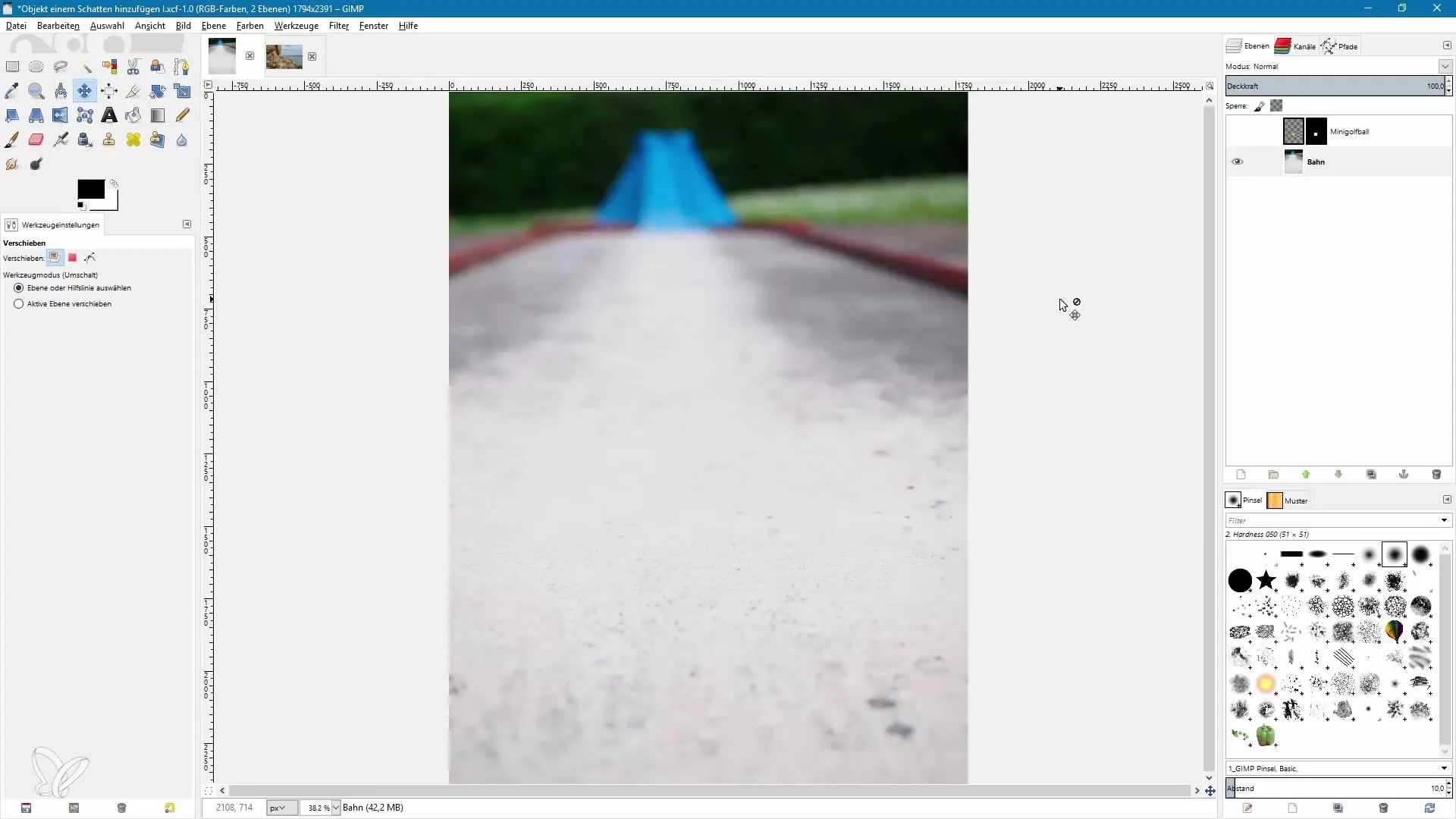
Now you want to create the drop shadow. To do this, go to the top menu, select “Filters,” look for “Light and Shadow,” and choose “Drop Shadow.” A dialogue box will open where you can adjust the settings for the drop shadow.
The offset values are not relevant in this case. Set the values for X and Y to zero to place the shadow directly behind the mini golf ball. Without offset, the shadow will be round and not perspective distorted. At this point, the blur radius and shadow color are also important.
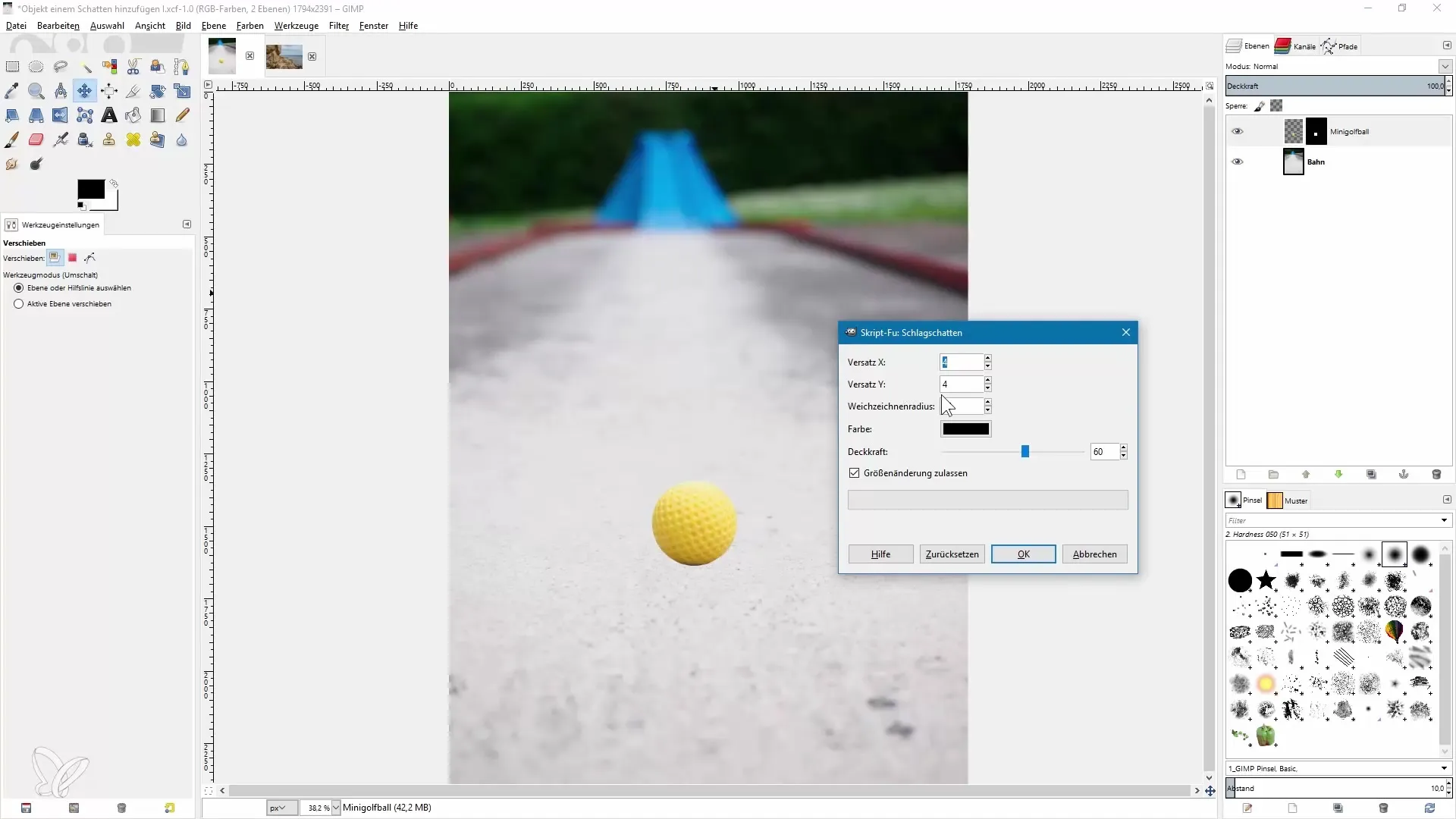
Select the shadow color Black and set the opacity to 100%. Confirm the settings. You will now see that the drop shadow has been created and is located behind the ball.
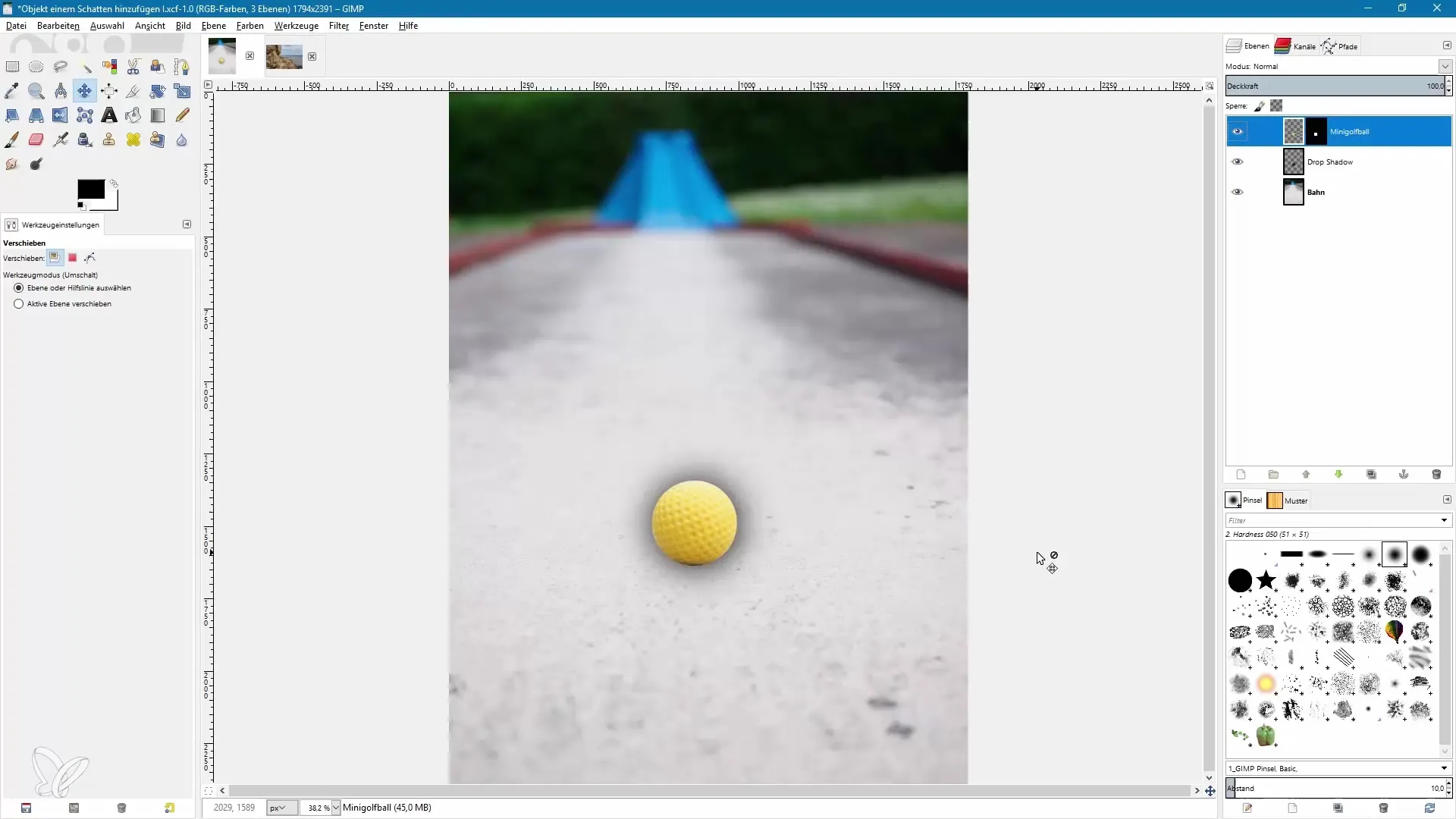
To maintain flexibility, rename the newly created layer to “Drop Shadow.” With this naming, you can easily adjust the opacity later. I find the shadow here still a bit too dark. Therefore, I reduce the opacity to 50%.
To deform the drop shadow, select the Scale tool. Click on the shadow and drag it down. The shadow should be directly below the ball, creating the impression that light is hitting the ball from above.
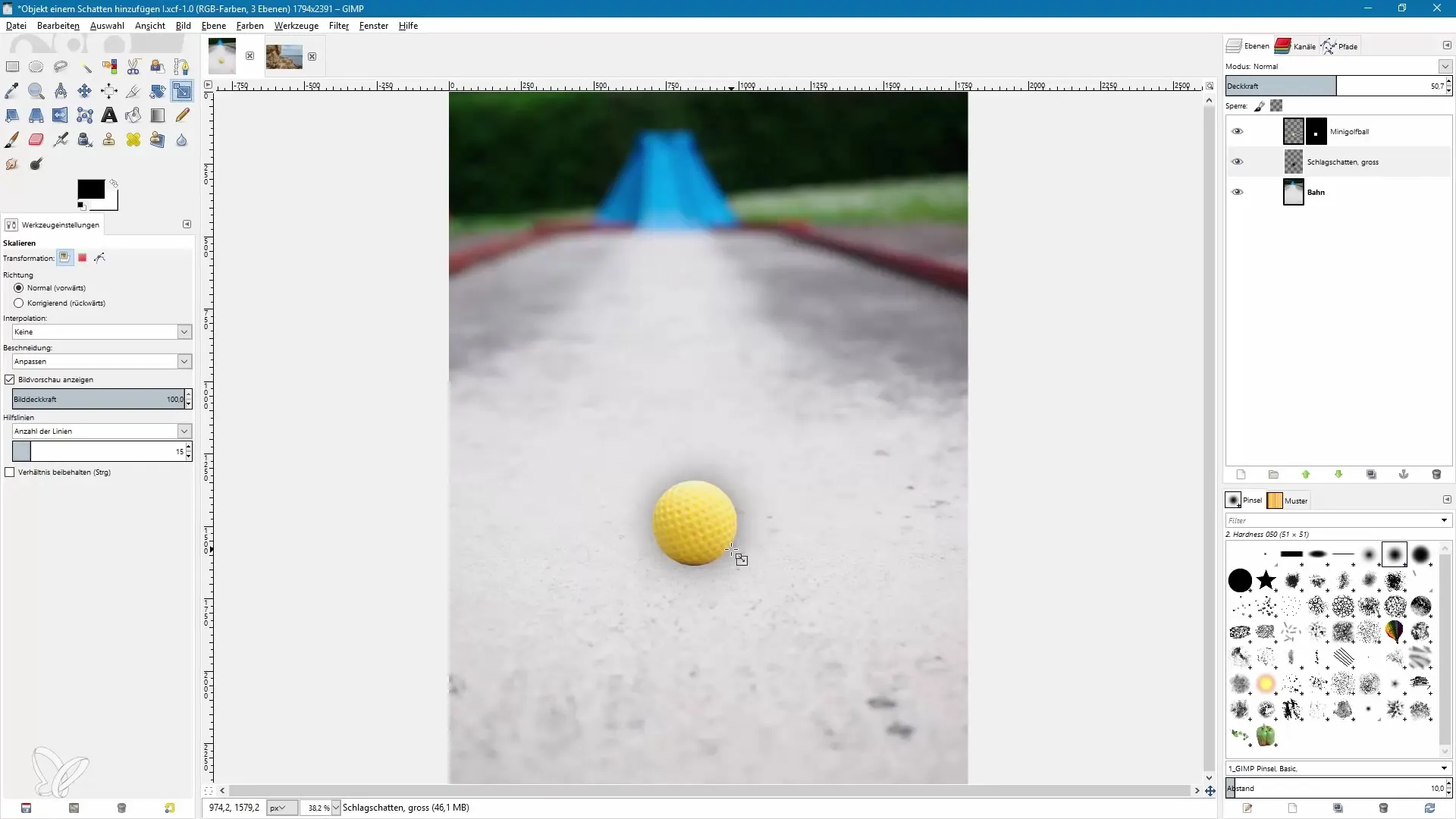
By squashing the shadow, you make it look more realistic. Move the shadow as desired and confirm the changes.
Now the shadow looks good, but to make the area immediately below the ball even more realistic, you want to add a second, smaller drop shadow. Create a duplicate of the drop shadow layer, and rename this new layer to “Small Drop Shadow.”
Activate the Scale tool and proportionally reduce the new drop shadow while holding down the control key. Now position this shadow directly below the ball and confirm the scaling.
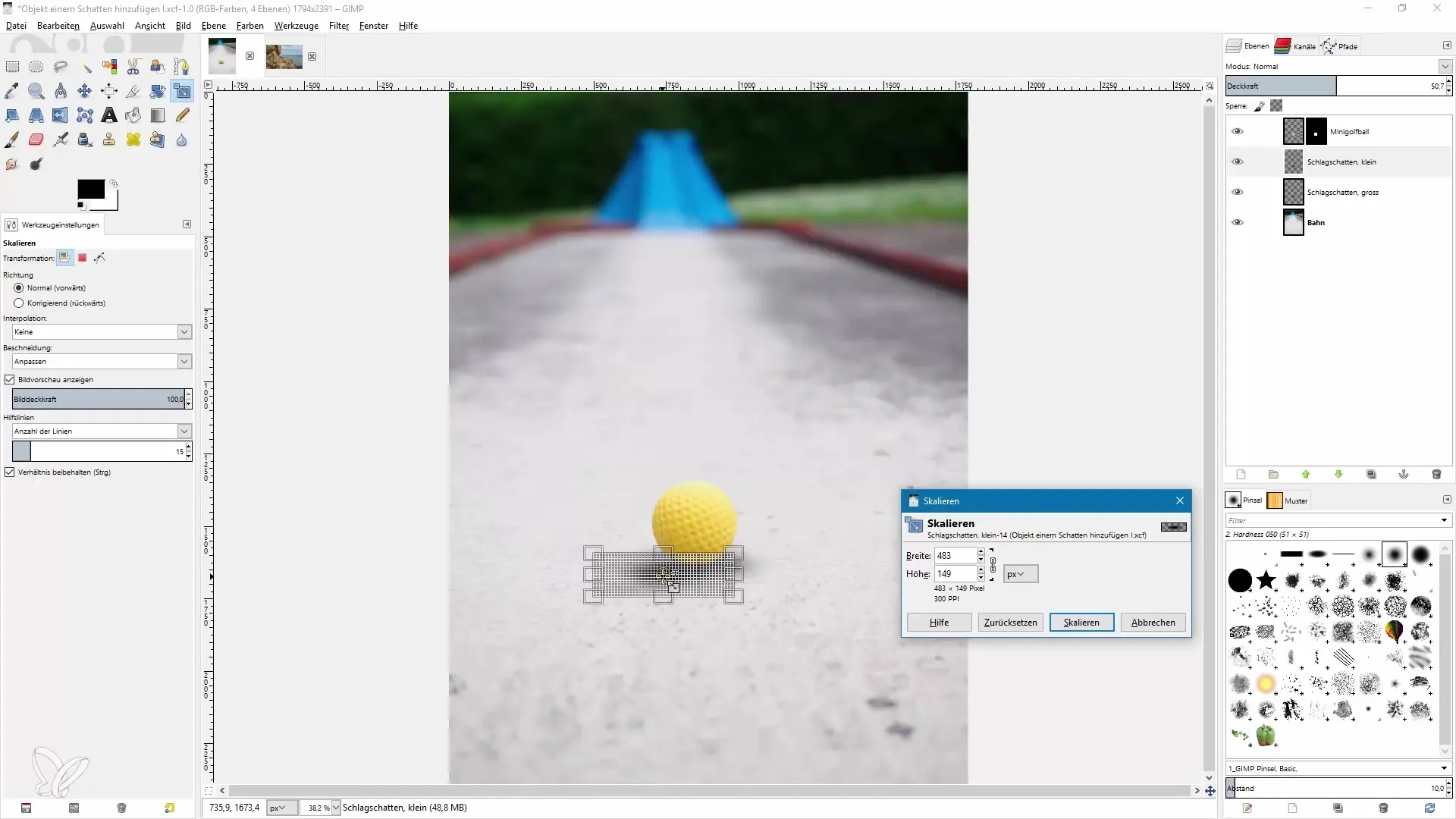
To further edit this shadow, increase the opacity for a more realistic appearance. For example, you can adjust the opacity to about 70%.
It might also make sense to move the ball slightly upward to optimize the drop shadows. Select the mini golf ball layer and move it accordingly.
If you like, you can even add a third, very small drop shadow. Create another duplicate of the “Small Drop Shadow” layer and rename it to “Very Small Drop Shadow.” Reduce this shadow and place it strategically to achieve another realistic effect.
This gives your image several drop shadows that contribute to a convincing overall impression through their varying opacities and sizes.
To achieve the best results when creating drop shadows, it is recommended to layer different shadow layers with different opacity settings on top of each other.
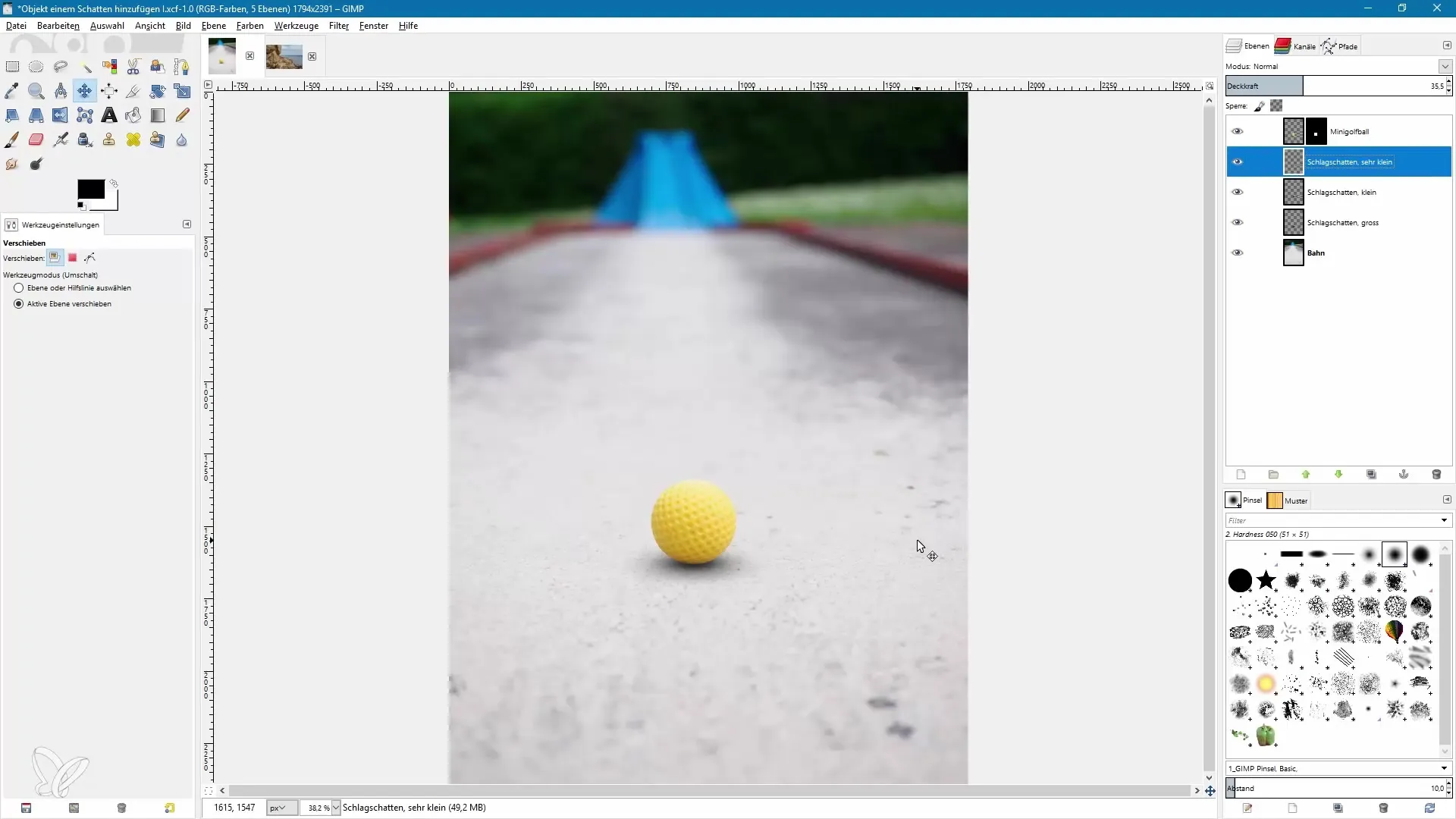
Summary – Creating Drop Shadows Effectively in GIMP
Creating drop shadows is a diverse mix of technique and creativity. With GIMP, you can add realistic drop shadows that give your image depth. It is important to invest time in designing to adjust the shades and utilize different layers. Having achieved the desired result, we look forward to enhancing your images through these techniques.
Frequently Asked Questions
How do I add a drop shadow in GIMP?Select the graphic layer filter “Drop Shadow” under “Light and Shadow” and adjust the filter settings.
How can I change the color of the drop shadow?Change the color in the drop shadow filter dialogue box before confirming.
Can I create multiple drop shadows in one image?Yes, you can create multiple separate drop shadow layers with different opacities to enhance the realistic effect.
What is the difference between black and gray shades for drop shadows?Black shadows provide a stronger contrast, while gray shadows appear softer and create subtler effects.
How can I adjust the position of the shadow?Use the Scale tool to proportionally enlarge, shrink, and reposition the shadow.

